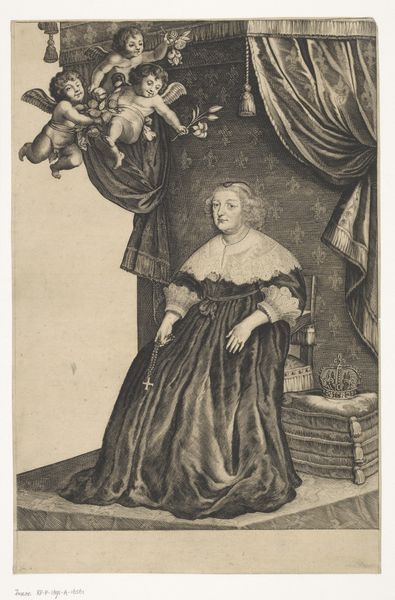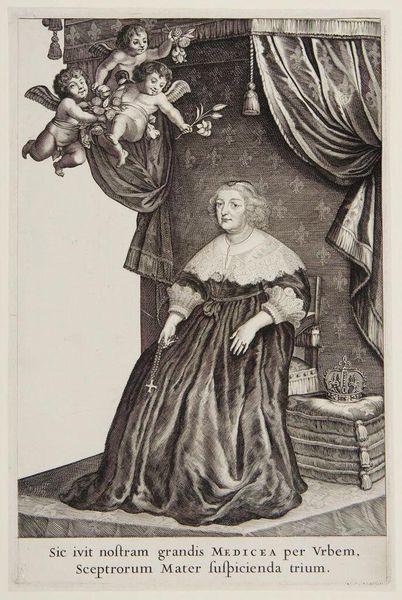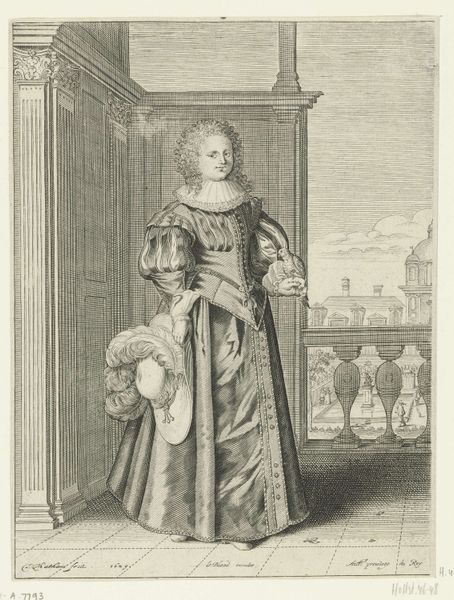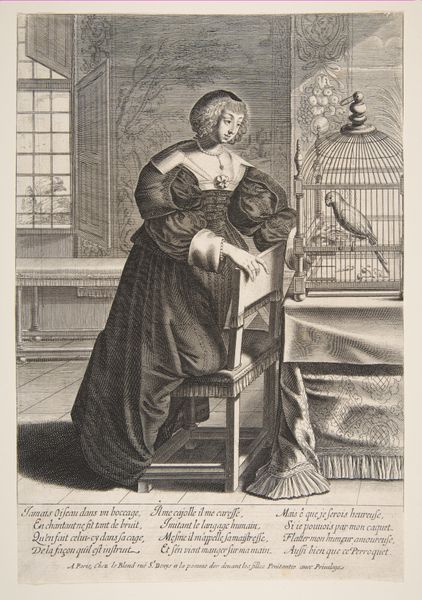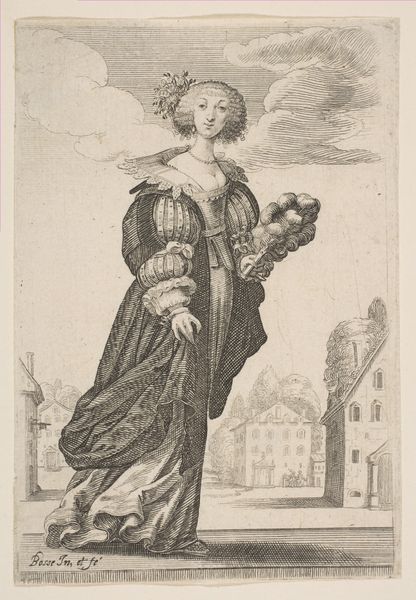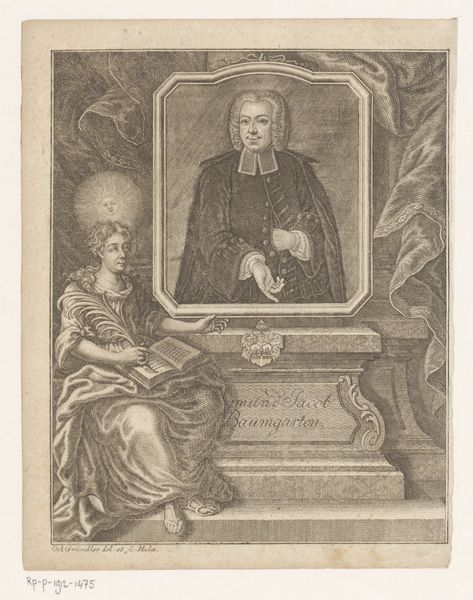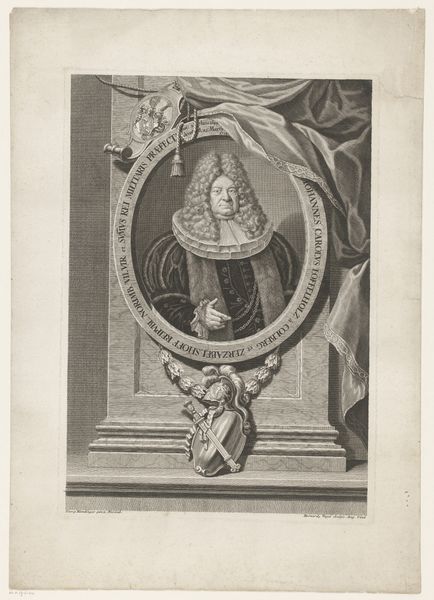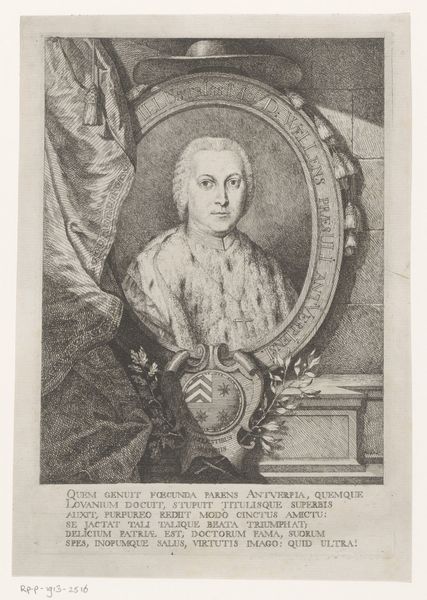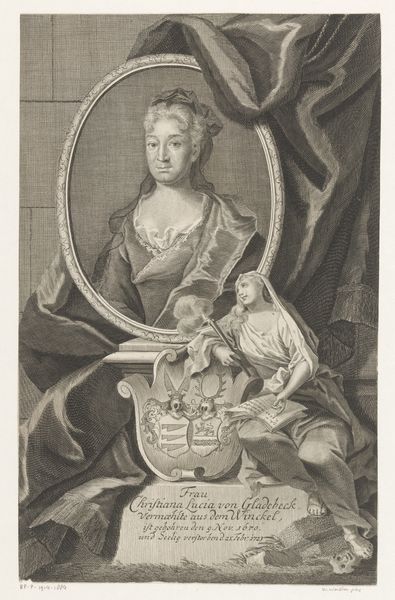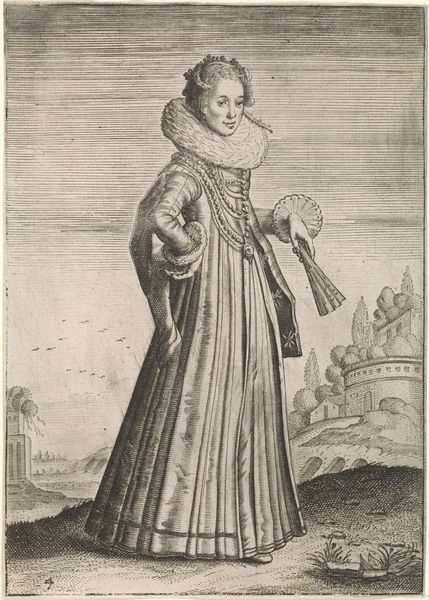
engraving
#
portrait
#
baroque
#
old engraving style
#
figuration
#
history-painting
#
engraving
Dimensions: height 322 mm, width 212 mm
Copyright: Rijks Museum: Open Domain
Editor: So, we're looking at Salomon Savery's "Portret van Maria de Medici", an engraving from 1638, housed at the Rijksmuseum. It’s an…interesting portrait. I mean, the cherubs feel very different from the serious depiction of Maria de Medici herself. What historical factors might explain this contrast? Curator: That contrast is exactly where the interest lies! We must consider the public image Savery and his patron wished to project. Here, Maria de Medici is depicted with symbols of both earthly and divine authority: the crown beside her represents her regal status, while the cherubs allude to divine blessing and legitimation of her power. But remember, this was a politically fraught time. Editor: How so? Curator: Maria de Medici served as Queen and Regent of France. Her rule was challenged by nobles. Engravings like these functioned as propaganda. By portraying her with both religious and royal authority, it reinforces her legitimacy at a time when it was publicly questioned. Consider, too, the background—a bustling city—and the text itself. This engraving broadcasts Medici’s strength. How does understanding this context change how you view the work? Editor: It helps me see beyond the almost formulaic imagery, and recognize it was deliberately crafted to serve a specific political purpose. I see how Savery turned a portrait into a potent political statement. Curator: Exactly. It’s not just a likeness; it’s a carefully constructed message about power, authority, and legitimacy. Hopefully, you’ve learned that context is vital in interpreting the public role of art.
Comments
No comments
Be the first to comment and join the conversation on the ultimate creative platform.
